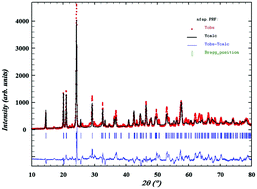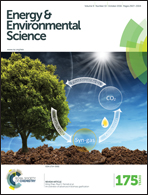NaFe2PO4(SO4)2: a potential cathode for a Na-ion battery
Abstract
Hexagonal Na3Zr2PO4(SiO4)2 is a well-known fast Na+ conductor commonly referred to as NASICON. The low cost and wide availability of sodium invites exploration of Na+-insertion cathodes with the hexagonal NASICON framework structure. Here we report a low-temperature synthesis of NaFe2PO4(SO4)2 with the same host framework as NASICON and its performance as the cathode of a Na/Na1+xFe2PO4(SO4)2 cell operating on the Fe3+/Fe2+ redox couple. The cell provides a single-phase reaction having a capacity approaching 100 mA h g−1 at 0.1C after 50 cycles over the voltage range 2 ≤ V ≤ 4 V with a coulomb efficiency approaching 100%. An increase in capacity with cycling is the result of aging of an unoptimized electrode morphology.


 Please wait while we load your content...
Please wait while we load your content...